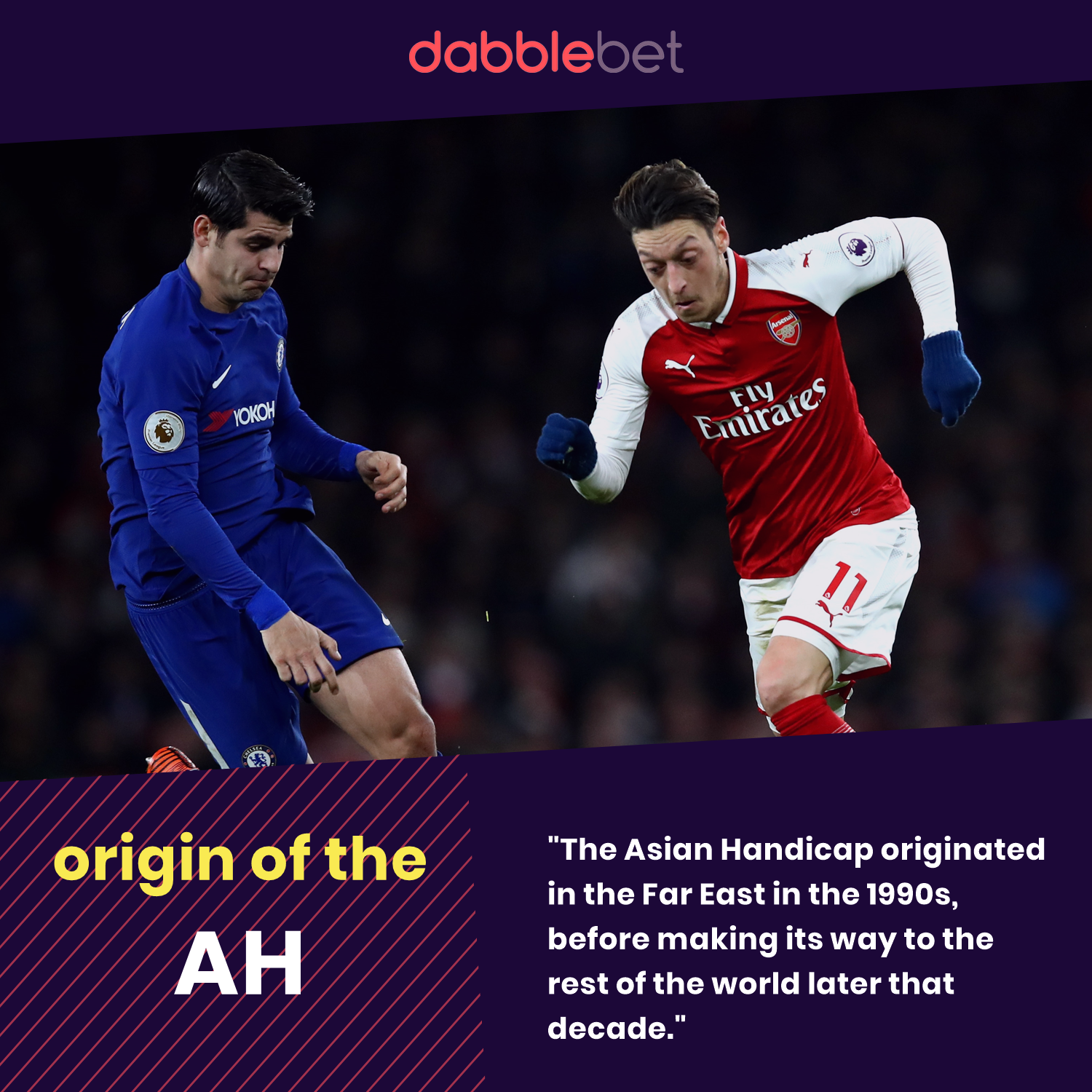With so many betting markets around, it can be hard to know which ones are worth putting your money on. Or even what they all mean and how each one works.
One of the more seemingly complex markets is the Asian Handicap, which is a market that puts people off because it often offers multiple choices and the fact that the odds are usually unconventional. However, once understood, it really offers a valuable alternative to the match result options that people are generally more familar with.
How did the Asian Handicap market come about?
The Asian Handicap is a fairly new betting option that originated in the Far East in the 1990s, before making its way to the rest of the world towards the end of the decade when journalist Joe Saumarez Smith coined the term “Asian Handicap” after being approached by Indonesian bookmaker Joe Phan, who wanted a translation of “Hang Cheng betting” for his new website.

How does Asian Hanidcap betting work?
Asian handicap betting aims to offer a betting option which offers close to Evens (2.0) on both sides, regardless of what the match odds might say about the probabilities of each team winning. Obviously this is tricky to do in a game where one side is heavily favoured.
So, in order to even things up, a handicap number is applied to each team, this takes the form of goals and as such, allows bettors an option regardless of which side of the market they want to take. This is similar to how a European handicap might work (e.g Team A -1 goal or Team B+1 goal) but unlike it’s European cousin, Asian Handicaps aren’t always a simple win or loss situation and thus can be a very popular choice with punters.
Backing a favourite? The Asian handicap lines offer a minus figure which that team must cover in order to win the bet (e.g. -1 or -1.5), whereas underdogs are given a headstart in the game in terms of goals (e.g. +0.5 or +1). These values can be broken down into half or quarters of a goal in order to accurately reflect the perceived chances of any given team in terms of the result.
What does this mean for Asian Hanidcap returns?
So how does it all work? For instance, Chelsea to beat Arsenal in the Carabao Cup semi-final first leg with a -0.75 Asian Handicap is 17/20 (1.85) with dabblebet, which is below Evens (2.0) and therefore should happen over 50 per cent of the time (54.1 per cent to be exact), so it seems like a decent shot if you wanted to back the Blues.
But what is minus three-quarters of a goal? Strictly speaking, a bet on -0.75 is actually two bets, as with any option involving a quarter of a goal – one on Chelsea to win with a -0.5 handicap and one on them to win with a -1 handicap – which suddenly becomes much easier to understand (some bookies will list this market as “-0.5, -1.0”).
The good thing about Asian Handicapping is that, unlike regular handicapping, you do not necessarily lose money even if your bet loses; a 1-goal win for Chelsea in the regular (European) handicap market sees a -1 handicap bet settled as a loser, because the match has ended in a draw for the purposes of your bet, but in the Asian markets a -1 handicap is settled as void, so you get your stake back.

Therefore, a bet of £10 on Chelsea to win with a -0.75 Asian Handicap is actually a £5 bet on each of the above handicaps, and you can make a profit of either £4.25 or £8.50 from that exact bet, depending on how many goals the Blues win by.
If the match is a draw or Arsenal win, then the bet loses outright, and if Chelsea win by two clear goals then you will see an overall return of £18.50 (including stake) because they have cleared both the -0.5 and the -1 handicaps.
If they win 1-0, for instance, you will win the -0.5 portion of your bet and see returns of £9.25 (£4.25 winnings plus £5 stake), but the -1 part will be voided so the £5 stake will be returned for a total of £14.25.
Alternatively, Chelsea to win with a -0.5 Asian handicap can be put on and this will land if the Blues win by any scoreline, whilst a bet on the -1 Asian handicap market available on dabblebet will be voided if Antonio Conte leads his men to a single-goal victory, or will land if the winning margin is two or greater.

This also works the other way for Arsenal backers, backing the Gunners +0.5 on an Asian handicap is essentially the same as a Double Chance bet, being settled as a winner if they avoid defeat. With a +1 line, stakes would be returned should Arsenal lose by just a single goal.
What if the Asian handicap is 0?
Should an Asian hanidcap line be set at 0, this market is the same as a Draw No Bet option seeing punters get their stake returned if the match finishes all square but offering a return at a reduced price on either side compared with the standard Win-Draw-Win options.
Why use Asian handicaps?
These markets offer a much more fluid set of outcomes than traditional European handicaps and as such, allow bettors to select a line that fits their view on the match more effectively. The option to have half or your full stake returned depending on the outcome of the game is also very attractive to some punters as it mitigates part of the risk that is run by taking a straight handicap bet where it is a simple win or loss scenario.

Let’